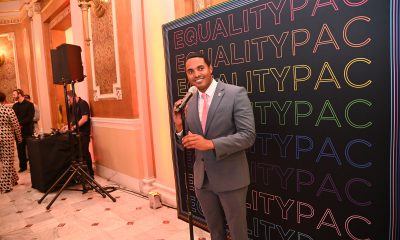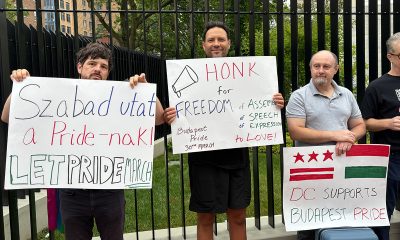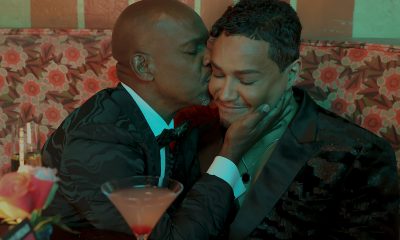Books
SPRING ARTS 2018 BOOKS: Fact, fiction and beyond
Queer themes — especially trans memoirs — abound in spring book crop
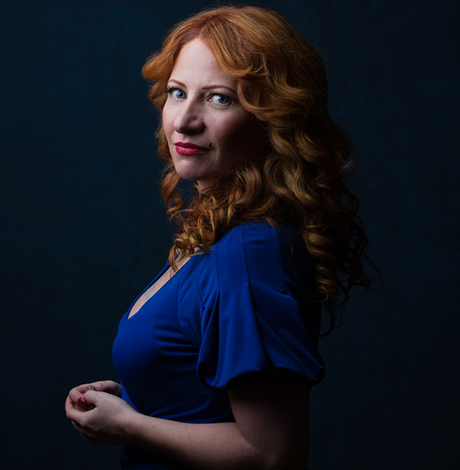
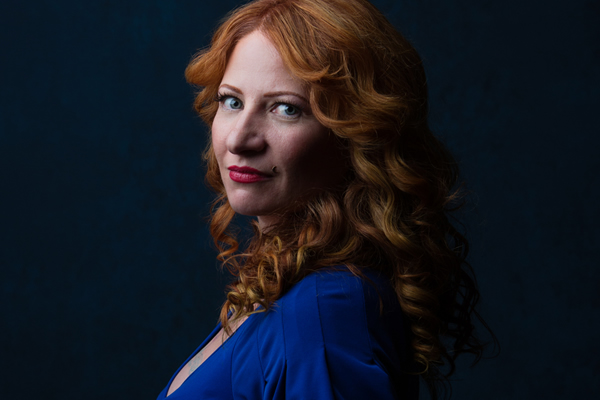
Out author Amber Dawn returns with her second novel ‘Sodom Road Exit’ on April. 3. (Photo courtesy Dawn)
In her much-anticipated memoir, “Tomorrow Will Be Different: Love, Loss and the Fight for Trans Equality” (Crown Archetype, March 6), Sarah McBride tells the story of how she went from closeted student body president at American University to the first transgender person to speak at a national political convention at the age of 26. One of the most prominent transgender activists of her time, McBride interweaves thoughtful analysis of contemporary political issues, such as bathroom access and trans health care, into her own triumphant journey. The book begins with a foreword by Joe Biden.
“Speak No Evil: A Novel” by Uzodinma Iweala (Harper, March 6) just might be the coming-out story of the year, and a Washingtonian one at that. Iweala’s heart-wrenching sophomore novel follows Niru, a seemingly charmed track star at an elite D.C. private school bound for Harvard. Only his best friend Meredith knows he is gay until his sexuality is discovered by his conservative Nigerian father. The repercussions are swift and violent, catastrophic for his relationship with his family and taxing in his friendship with Meredith. The novel is a visceral but compassionate portrait of what it means to be different within a family, let alone society at large.
In “The Affliction” (Four Way Books, March 6), award-winning poet C. Dale Young makes his fiction debut with a novel told in fantastical short stories, spanning the United States and Caribbean. Among the novel’s many memorable characters are a man who can disappear, a woman who can see the future and a man raised in a cult who believes he is doomed to die. Young is openly gay and of Latino and Asian descent. He is also very much left- and right-brained in that he is a full-time physician when not writing and teaching creative writing at Warren Wilson College.
“The Sparsholt Affair” by Alan Hollinghurst (Knopf, March 13) begins with a covert gay relationship at Oxford University in 1940 and spans three generations, masterfully unfolding the social and sexual revolutions that have taken place through present day. Instantly a bestseller in the U.K., the novel is anchored by David Sparsholt and Evert Dax, whose evening trysts at Oxford feel especially under the radar with the world at war. Hollinghurst, who won the Man Booker Prize in 2004, is an openly gay English author.
“Berlin 1936: Sixteen Days in August” by Oliver Hilmes (Brodley Head, March 27) is a fascinating historical account of the 1936 Olympic Games in Berlin. Hilmes, a gay German historian, paints an intoxicating picture of the city of Liza Minelli’s “Cabaret” — where queer life flourished under the Weimar Republic — contrasted with the terrifying rise of Adolf Hitler. In addition to analyzing the events of the Olympic Games, namely Jesse Owens’ triumph, Hilmes also introduces us to the lives of ordinary (some queer) Berliners. The book is ultimately an ode to the city, which has since reestablished itself as one of the most dynamic creative queer capitals in the world.
Chelsey Johnson’s debut novel, “Stray City” (Custom House, March 20) is the queer anti-“Gilmore Girls” you didn’t know you needed. This warm, hysterical story follows 23-year-old Andrea Morales, who escaped her Midwestern Catholic childhood to create a life for herself in Portland’s vibrant lesbian community. One especially debauched evening, Andrea hooks up with a man and later finds herself pregnant. The novel jumps to a decade later, as Andrea’s precocious daughter Lucia starts asking questions about the father she’s never met.
“Written on the Body,” edited by Lexie Bean (Jessica Kingsley Publishers, March 21), is a collection of essays written by and for trans and non-binary survivors of sexual assault and domestic violence. With contributions from Dean Spade, Nyala Moon, Alex Valdes, Sawyer DeVuyst and Ieshai Bailey, this book offers support, guidance and affirmation for trans survivors, whose stories are too often met with incredulousness and skepticism.
Amber Dawn, a Lambda Literary Award winner, returns with her second novel, “Sodom Road Exit” (Arsenal Pulp Press, April 3). This spellbinding paranormal thriller takes place in the summer of 1990 in Crystal Beach. Queer picaresque heroine, Starla Mia Martin, drops out of college and returns to find her lakeside village a ghost town after its beloved amusement park shuts down. Starla soon discovers an unnerving energy in the air — strange sounds, phantasmagoric sightings — and instead of hopping off the rollercoaster, she confronts every twist and turn head-on.
If you’re a poetry fan, “Nepantla: An Anthology Dedicated to Queer Poets of Color” (Nightboat Books, May 1), edited by Christopher Soto, is a stunning celebration of the diversity of the queer poetry community, as varied in style and form as it is in the experiences held by each contributor. Soto launched Nepantla with the Lambda Literary Foundation as an online journal to share the work of queer and trans poets of color. This is its first time in print, featuring canonical pieces by legends like Audre Lorde and James Baldwin alongside their contemporaries, such as Natalie Diaz, Tommy Pico and Chen Chen.
Celebrated novelist Alexander Chee makes his nonfiction debut with “How to Write an Autobiographical Novel” (Mariner Books, April 17). This revealing collection of essays is Chee’s manifesto on what it means to be a contemporary writer and gay man, Korean American, artist, activist, lover and friend. While tracing the most decisive moments of his own life, Chee also examines some of the nation’s biggest historical turning points, from the AIDS crisis to the election of Donald Trump.
“Little Fish” (Arsenal Pulp Press, May 1) is the debut novel from Lambda Literary Award-winning short story writer Casey Plett. The protagonist, Wendy Reimer, is a 30-year-old trans woman who discovers that her late grandfather, a pious Mennonite farmer, was likely transgender as well. In distracting herself from the problems in her own life and those of her friends — from alcoholism, to sex work to suicide — Wendy finds herself fully consumed by this familial mystery and the need to uncover the truth.
“SELF-ish: a Transgender Awakening” (Red Hen Press, May 4), a memoir by Chloe Schwenke, tells of her life and adventures living in five countries and working on projects in more than 40, mostly in Africa and the Middle East. This former Obama Administration appointee, has committed her life to assisting marginalized groups in some of the world’s most challenging countries.
If you haven’t gotten a chance to see it live, snag the paperback of legendary playwright Tony Kushner’s “The Intelligent Homosexual’s Guide to Capitalism and Socialism with a Key to the Scriptures” (Theatre Communications Group, May 8). The play opens with Gus Marcantonio, a retired longshoreman, who has gathered his family together to discuss his decision to commit suicide. Kushner, who wrote “Angels in America” and has won a Pulitzer and two Tony Awards, uses his signature wit in telling a story of revolution, family and challenging the systemic constructs we consider inherent to our society. It will be interesting to see how it translates to the page; Theater J’s D.C. production a few years ago felt like three hours of overlapping screaming.

Out playwright Tony Kushner has adapted his play ’The Intelligent Homosexual’s Guide …’ to the written page. (Photo courtesy Berkeley Rep)
Other releases of note include:
• “The Routledge History of Queer America” (Routledge Histories), edited by Don Romesburg, offers one of the most comprehensive overviews of LGBT U.S. history, featuring nearly 30 chapters spanning the colonial era to present day. The book is $210 and releases March 14.
• “Post-Borderlandia: Chicana Literature and Gender Variant Critique”(Rutgers University Press) by Jackie T. Cuevas synthesizes Chicana/o studies with queer theory and transgender studies, exploring gender identity and expression using the Chicana feminist canon and contemporary thinkers and artists. The book is $26.96 and releases March 28.
• “Transforming: the Bible & the Lives of Transgender Christians” (Westminster John Knox Press) by Austen Hartke challenges the way readers conceptualize faith and the transgender experience, analyzing Biblical figures and providing representation to modern-day trans Christians. The book is $16 and out April 7.
• “Picture Us in the Light” by Kelly Loy Gilbert (Disney-Hyperion) is a poignant gay YA novel about Danny Cheng, a young artist bound for college who finds himself inexplicably panicked that he’ll be moving far from his best friend, Harry Wong. He’s also shaken by a disturbing discovery in his father’s closet. The book is $17.99 and releases April 10.
• “Not Here” (Coffee House Press) is the latest from critically acclaimed queer Vietnamese-American poet Hieu Minh Nguyen. Nguyen uses a wide variety of styles to provocatively confront whiteness, evoke both pleasure and pain, and find a sense of home in deep loneliness. The book is $16.95 and out April 10.
• “The Bride Was a Boy” by Chii (Seven Seas, May 1) is a delightful autobiographical manga novel about a transgender love story, drawn in the style of diary comics. Chii, who was assigned male at birth, begins with her childhood and continues through her latest adventure: marrying the man of her dreams. The book is $12.59 and available May 1.
• “Now the Night Begins” (Semiotext(e)/Native Agents) is gay French filmmaker Alain Guiraudie’s first foray into literature, translated by Jeffrey Zuckerman. Adopting his signature film themes, the novel is driven by disconcerting, overpowering sexual desire, centered on 40-year old protagonist Gilles Heurtebise’s all-encompassing obsession with a 90-year old man in his neighborhood. It costs $24.95 and is out May 11.
• “50 Queer Music Icons Who Changed the World” (Hardie Grant, May 15), written by Will Larnach-Jones and illustrated by Michele Rosenthal, is a beautiful tribute to the LGBT musicians who have been pushing boundaries since the 1920s, featuring everyone from Little Richard to Frank Ocean. It’s $14.99 and available May 15.
Books
Embracing the chaos can be part of the fun
‘Make Sure You Die Screaming’ offers many twists and turns
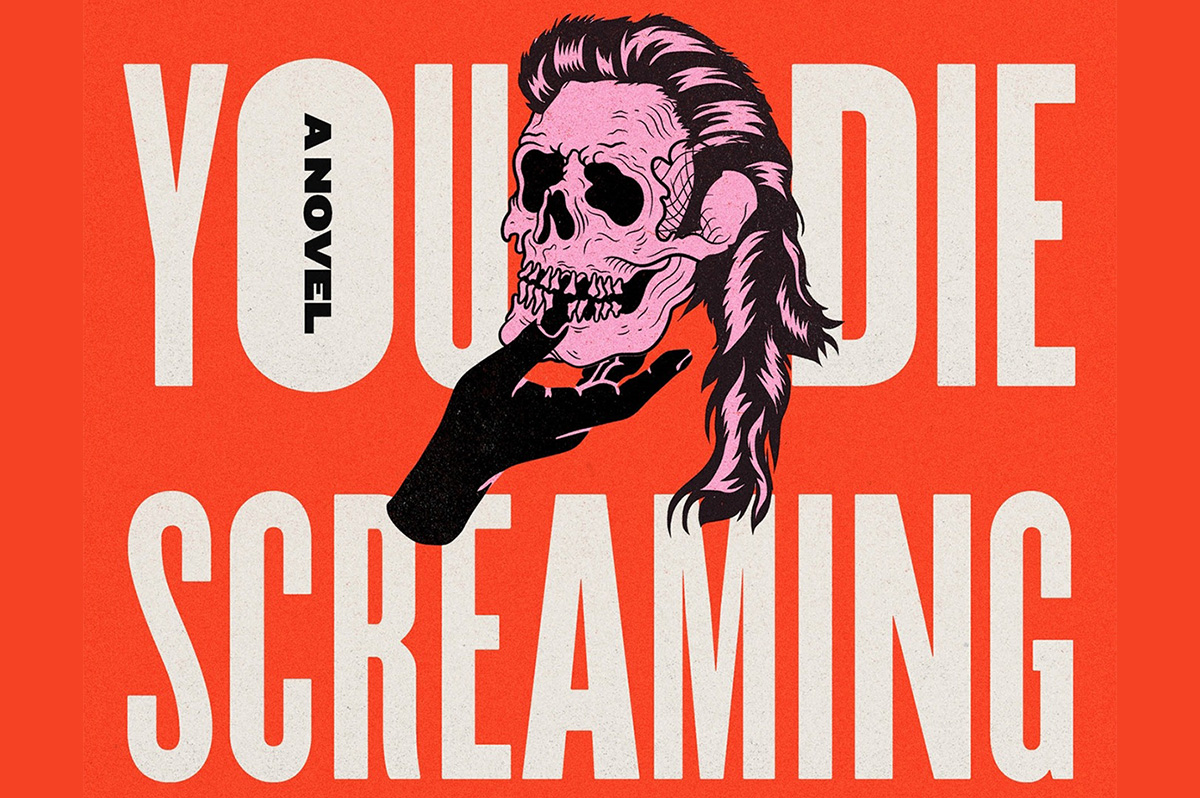
‘Make Sure You Die Screaming’
By Zee Carlstrom
c.2025, Random House
$28/304 pages
Sometimes, you just want to shut the door and forget what’s on the other side.
You could just wipe it from your memory, like it didn’t occur. Or create an alternate universe where bad things never happen to you and where, as in the new novel “Make Sure You Die Screaming” by Zee Carlstrom, you can pretend not to care.

Their mother called them “Holden,” but they’d stopped using that name and they hadn’t decided what to use now. What do you call an alcoholic, queer, pessimistic former ad executive who’s also “The World’s First Honest White Man,” although they no longer identify as a man? It’s a conundrum that they’ll have to figure out soon because a cop’s been following them almost since they left Chicago with Yivi, their psychic new best friend.
Until yesterday, they’d been sleeping on a futon in some lady’s basement, drinking whatever Yivi mixed, and trying not to think about Jenny. They killed Jenny, they’re sure of it. And that’s one reason why it’s prudent to freak out about the cop.
The other reason is that the car they’re driving was stolen from their ex-boyfriend who probably doesn’t know it’s gone yet.
This road trip wasn’t exactly well-planned. Their mother called, saying they were needed in Arkansas to find their father, who’d gone missing so, against their better judgment, they packed as much alcohol as Yivi could find and headed south. Their dad had always been unique, a cruel man, abusive, intractable; he suffered from PTSD, and probably another half-dozen acronyms, the doctors were never sure. They didn’t want to find him, but their mother called…
It was probably for the best; Yivi claimed that a drug dealer was chasing her, and leaving Chicago seemed like a good thing.
They wanted a drink more than anything. Except maybe not more than they wanted to escape thoughts of their old life, of Jenny and her death. And the more miles that passed, the closer they came to the end of the road.
If you think there’s a real possibility that “Make Sure You Die Screaming” might run off the rails a time or three, you’re right. It’s really out there, but not always in a bad way. Reading it, in fact, is like squatting down in a wet, stinky alley just after the trash collector has come: it’s filthy, dank, and profanity-filled. Then again, it’s also absurd and dark and philosophical, highly enjoyable but also satisfying and a little disturbing; Palahniuk-like but less metaphoric.
That’s a stew that works and author Zee Carlstrom stirs it well, with characters who are sardonic and witty while fighting the feeling that they’re unredeemable losers – which they’re not, and that becomes obvious.
You’ll see that all the way to one of the weirdest endings ever.
Readers who can withstand this book’s utter confusion by remembering that chaos is half the point will enjoy taking the road trip inside “Make Sure You Die Screaming.”
Just buckle up tight. Then shut the door, and read.
The Blade may receive commissions from qualifying purchases made via this post.
Books
Two new books on dining out LGBTQ-style
Visit nightclubs, hamburger joints, and a bathhouse that feeds customers
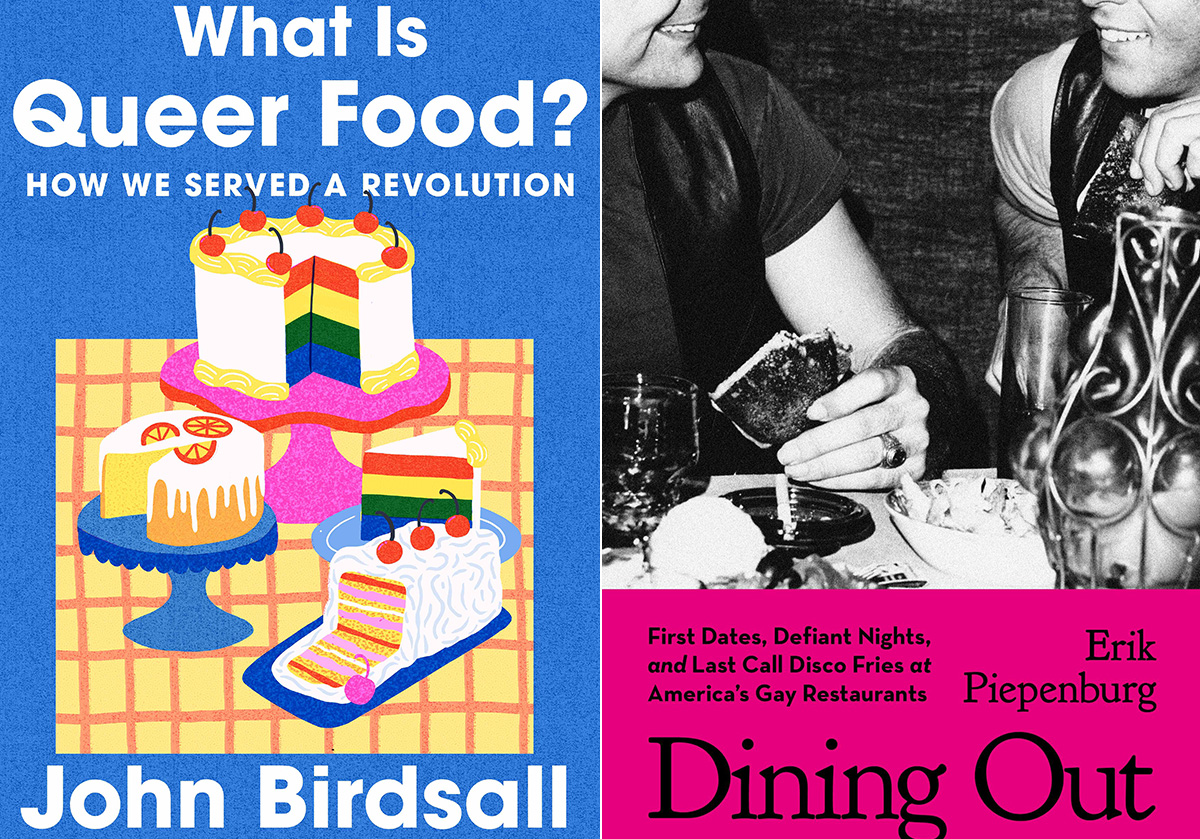
‘What is Queer Food? How We Served a Revolution’
By John Birdsall
c.2025, W.W. Norton
$29.99/304 pages
‘Dining Out: First Dates, Defiant Nights, and Last Call Disco Fries at America’s Gay Restaurants’
By Erik Piepenburg
c.2025, Grand Central
$30/352 pages
You thought a long time about who sits where.
Compatibility is key for a good dinner party, so place cards were the first consideration; you have at least one left-hander on your guest list, and you figured his comfort into your seating chart. You want the conversation to flow, which is music to your ears. And you did a good job but, as you’ll see with these two great books on dining LGBTQ-style, it’s sometimes not who sits where, but whose recipes were used.
When you first pick up “What is Queer Food?” by John Birdsall, you might miss the subtitle: “How We Served a Revolution.” It’s that second part that’s important.

Starting with a basic gay and lesbian history of America, Birdsall shows how influential and (in)famous 20th century queer folk set aside the cruelty and discrimination they received, in order to live their lives. They couldn’t speak about those things, he says, but they “sat down together” and they ate.
That suggested “a queer common purpose,” says Birdsall. “This is how who we are, dahling, This is how we feed our own. This is how we stay alive.”
Readers who love to cook, bake or entertain, collect cookbooks, or use a fork will want this book. Its stories are nicely served, they’re addicting, and they may send you in search of cookbooks you didn’t know existed.
Sometimes, though, you don’t want to be stuck in the kitchen, you want someone else to bring the grub. “Dining Out” by Erik Piepenburg is an often-nostalgic, lively look at LGBTQ-friendly places to grab a meal – both now and in the past.

In his introduction, Piepenburg admits that he’s a journalist, “not a historian or an academic,” which colors this book, but not negatively. Indeed, his journeys to “gay restaurants” – even his generous and wide-ranging definitions of the term – happily influence how he presents his narrative about eateries and other establishments that have fed protesters, nourished budding romances, and offered audacious inclusion.
Here, there are modern tales of drag lunches and lesbian-friendly automats that offered “cheap food” nearly a century ago. You’ll visit nightclubs, hamburger joints, and a bathhouse that feeds customers on holidays. Stepping back, you’ll read about AIDS activism at gay-friendly establishments, and mostly gay neighborhood watering holes. Go underground at a basement bar; keep tripping and meet proprietors, managers, customers and performers. Then take a peek into the future, as Piepenburg sees it.
The locales profiled in “Dining Out” may surprise you because of where they can be found; some of the hot-spots practically beg for a road trip.
After reading this book, you’ll feel welcome at any of them.
If these books don’t shed enough light on queer food, then head to your favorite bookstore or library and ask for help finding more. The booksellers and librarians there will put cookbooks and history books directly in your hands, and they’ll help you find more on the history and culture of the food you eat. Grab them and you’ll agree, they’re pretty tasty reads.
The Blade may receive commissions from qualifying purchases made via this post.
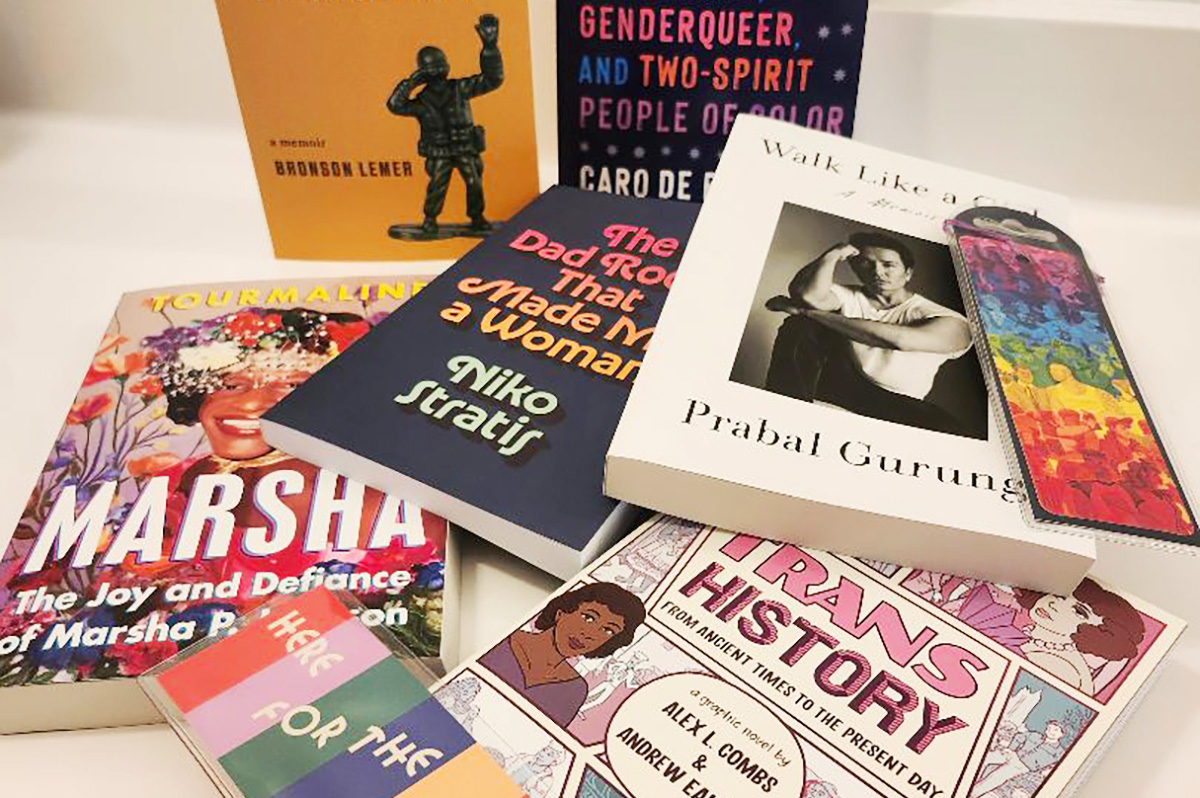
You’re going to be on your feet a lot this month.
Marching in parades, dancing in the streets, standing up for people in your community. But you’re also likely to have some time to rest and reflect – and with these great new books, to read.
First, dip into a biography with “Marsha: The Joy and Defiance of Marsha P. Johnson” by Tourmaline (Tiny Rep Books, $30), a nice look at an icon who, rumor has it, threw the brick that started a revolution. It’s a lively tale about Marsha P. Johnson, her life, her activism before Stonewall and afterward. Reading this interesting and highly researched history is a great way to spend some time during Pride month.
For the reader who can’t live without music, try “The Dad Rock That Made Me a Woman” by Niko Stratis (University of Texas Press, $27.95), the story of being trans, searching for your place in the world, and finding it in a certain comfortable genre of music. Also look for “The Lonely Veteran’s Guide to Companionship” by Bronson Lemer (University of Wisconsin Press, $19.95), a collection of essays that make up a memoir of this and that, of being queer, basic training, teaching overseas, influential books, and life.
If you still have room for one more memoir, try “Walk Like a Girl” by Prabal Gurung (Viking, $32.00). It’s the story of one queer boy’s childhood in India and Nepal, and the intolerance he experienced as a child, which caused him to dream of New York and the life he imagined there. As you can imagine, dreams and reality collided but nonetheless, Gurung stayed, persevered, and eventually became an award-winning fashion designer, highly sought by fashion icons and lovers of haute couture. This is an inspiring tale that you shouldn’t miss.
No Pride celebration is complete without a history book or two.
In “Trans History: From Ancient Times to the Present Day” by Alex L. Combs & Andrew Eakett ($24.99, Candlewick Press), you’ll see that being trans is something that’s as old as humanity. One nice part about this book: it’s in graphic novel form, so it’s lighter to read but still informative. Lastly, try “So Many Stars: An Oral History of Trans, Nonbinary, Genderqueer, and Two-Spirit People of Color” by Caro De Robertis (Algonquin Books of Chapel Hill. $32.00) a collection of thoughts, observations, and truths from over a dozen people who share their stories. As an “oral history,” you’ll be glad to know that each page is full of mini-segments you can dip into anywhere, read from cover to cover, double-back and read again. It’s that kind of book.
And if these six books aren’t enough, if they don’t quite fit what you crave now, be sure to ask your favorite bookseller or librarian for help. There are literally tens of thousands of books that are perfect for Pride month and beyond. They’ll be able to determine what you’re looking for, and they’ll put it directly in your hands. So stand up. March. And then sit and read.



